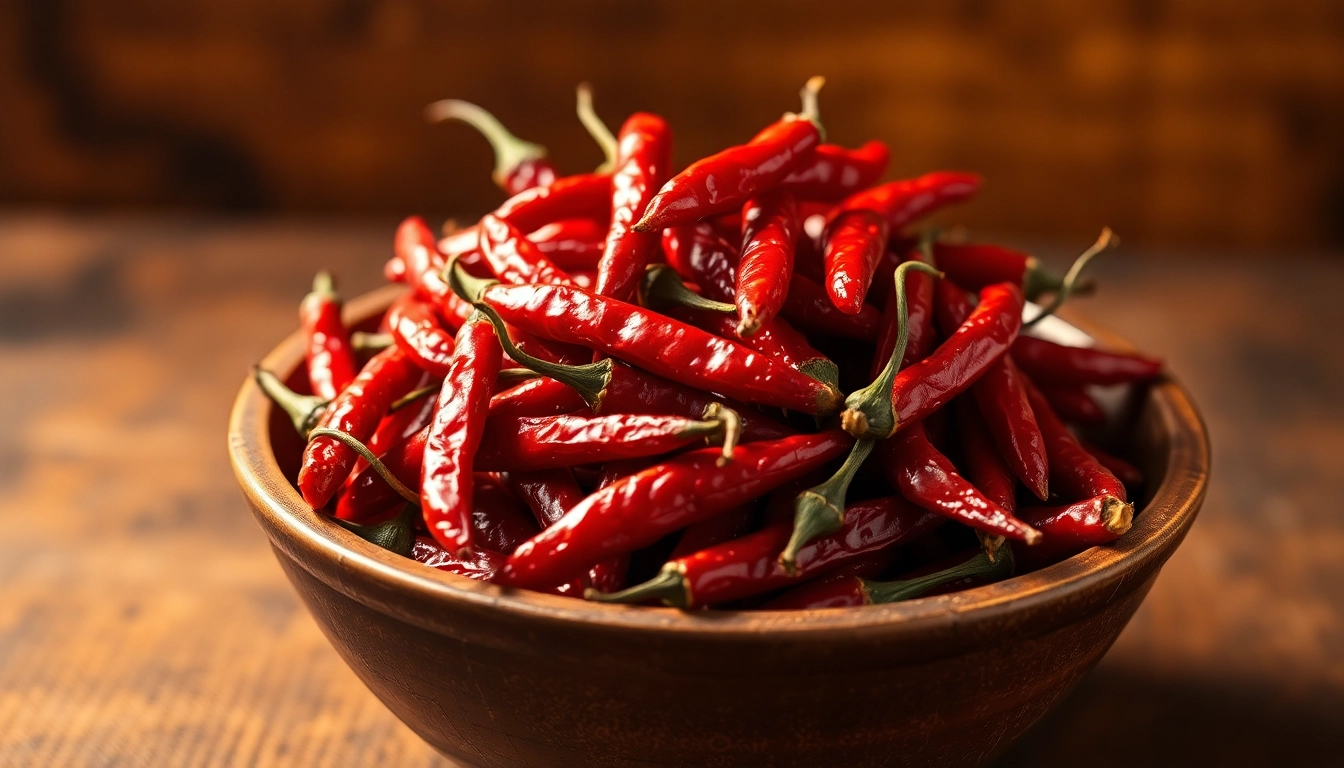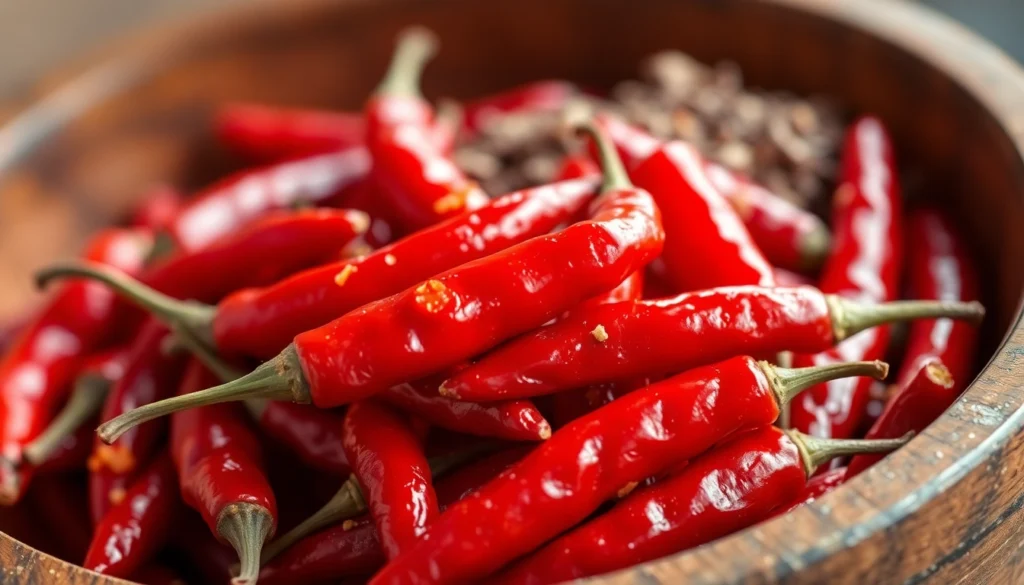Understanding Chilli Whole: Types and Characteristics
Chilli whole is a fundamental spice used extensively in various cuisines worldwide, renowned for adding heat, flavor, and depth to dishes. Recognized for its vibrant color and fiery pungency, Chilli Whole varieties offer a spectrum of flavor profiles suited for diverse culinary applications. As a leading manufacturer and exporter, Spice Nest emphasizes quality and authenticity, ensuring that each batch meets stringent standards for freshness, potency, and purity.
Popular Varieties of Chilli Whole and Their Flavor Profiles
Several varieties of Chilli Whole are prized for their unique characteristics. Some of the most sought-after include:
- Kashmir Chilli: Known for its bright red color, moderate heat, and slightly fruity flavor, ideal for garnishing and flavoring curries.
- Mexican Chilli (ancho or chipotle): Smoky aroma with medium heat, perfect for sauces and spice blends.
- Indian Red Chilli: Spicy with a pungent aroma, used widely in Indian cooking to impart heat and color.
- Bird’s Eye Chilli: Extremely hot, with a sharp, intense pungency, suitable for pickles and hot sauces.
Each variety caters to different culinary needs, balancing heat intensity with flavor nuances. Choosing the right type enhances dish aroma, visual appeal, and overall taste.
Differences Between Fresh and Dried Chilli Whole
Chilli Whole is available in both fresh and dried forms, each serving distinct purposes. Fresh chillies possess a vibrant color, moist texture, and a milder flavor profile, making them suitable for salads and garnishing. Conversely, dried Chilli Whole undergoes dehydration, concentrating flavors, intensifying heat, and extending shelf life, suitable for deepening the flavor of cooked dishes.
Properly dried chillies are wrinkled, with a deep red or brown hue, indicating high quality. Their moisture content should be low to prevent spoilage. When selecting dried chillies, look for uniform coloration, absence of mold or signs of fermentation, and a robust aroma.
How to Identify High-Quality Chilli Whole During Purchase
Quality assurance starts at the point of purchase. To identify premium Chilli Whole:
- Color: Bright, deep red or specific to variety, indicating ripeness and freshness.
- Texture: Firm, dry, and free from cracks or brittleness; avoid soft or shriveled pods.
- Aroma: Pronounced, pungent smell suggests potent flavor; stale chillies lack aroma.
- Size and Uniformity: Consistent size indicates careful sorting; uneven sizes may affect flavor distribution.
- Absence of Contaminants: No signs of mold, foreign matter, or insect damage.
Trusted suppliers like Spice Nest provide certifications and adhere to international quality standards, ensuring that customers receive the best product for culinary and export needs.
Benefits of Incorporating Chilli Whole in Cooking
Enhancing Taste and Aroma with Chilli Whole
Chilli Whole brings a multifaceted flavor profile—spicy, smoky, and sometimes even sweet—depending on the variety. Its addition elevates the sensory experience of dishes by infusing heat and aroma, creating a layered flavor foundation. When used appropriately, Chilli Whole can transform basic preparations into signature dishes, imparting warmth and depth that dry powders or sauces often can’t replicate.
For instance, slow-roasting Chilli Whole enhances its smokiness, imparting a rich aroma perfect for curries and marinades. Using Chilli Whole during tempering or sautéing releases essential oils, enhancing fragrance and taste.
Health Benefits Linked to Chilli Whole Consumption
Chilli Whole is rich in capsaicin, an active compound recognized for its health benefits, including pain relief, boosting metabolism, and aiding digestion. Regular consumption may also help manage weight, improve cardiovascular health, and act as an antioxidant. Moreover, its antimicrobial properties can contribute to gut health and immune support.
Studies indicate that capsaicin may also have mood-enhancing effects by stimulating endorphin release, making Chilli Whole not just a culinary ingredient but also a functional food with therapeutic potential.
Adding Visual Appeal and Authenticity to Dishes with Chilli Whole
Visually, Chilli Whole adds vibrant color, making dishes more appealing and authentic. Many regional recipes rely on whole chillies to communicate tradition and authenticity—such as Indian curries, Thai stir-fries, or Mexican moles. The presence of whole chillies signals a flavor-rich, genuine culinary experience, appealing to both aesthetic and cultural sensibilities.
Best Practices for Preparing and Cooking with Chilli Whole
Proper Storage Techniques for Preserving Freshness
To maintain freshness and potency, store Chilli Whole in airtight containers, away from direct sunlight and moisture. Preferably, keep them in a cool, dry place or refrigerate for extended shelf life. Avoid exposure to humidity, which can lead to mold growth and spoilage. Vacuum-sealing or using moisture-absorbing packets further prolongs shelf life.
Methods to Grind or Crush Chilli Whole for Recipes
Chilli Whole can be ground using traditional mortar and pestle or modern spice grinders. For a smoky flavor, dry roasting the chillies before grinding enhances aromatic properties. For milder heat, remove seeds or membranes during preparation. Ensuring the chillies are completely dry before grinding prevents clogging of equipment and results in finer, more consistent powder.
Tips for Balancing Heat and Flavor in Culinary Applications
Start with small quantities, gradually increasing until desired heat level. Combine Chilli Whole with other spices like cumin, coriander, or turmeric to create balanced flavor profiles. For dishes requiring less heat but more aroma, lightly char or toast the chillies. Remove the whole chillies after infusing flavor to avoid excessive spiciness.
Innovative Recipes Featuring Chilli Whole
Spicy Indian Curries with Whole Chilli Flavor
Indian cuisine extensively uses Chilli Whole in recipes like Vindaloo, Kolhapuri, or Hyderabadi Biryani. Toasted whole chillies are added during tempering along with garlic and onions, creating a deep, spicy flavor. For a richer taste, Chilli Whole can be roasted and blended into spice pastes, adding complexity to the curry base.
Creative Snack Ideas Incorporating Chilli Whole
Chilli Whole can be an integral part of snacks—such as chili-infused nuts, spicy jerky, or roasted chickpeas. Marinating vegetables or fruits with Chilli Whole before roasting gives an enticing heat and crispness. Additionally, Chilli Whole can be used to create spicy crackers or chips that appeal to snack lovers seeking bold flavors.
Global Dishes Showcasing the Versatility of Chilli Whole
From Mexican Moles and Thai stir-fries to Mediterranean spicy sausages, Chilli Whole adapts well to varied cuisines. For example, adding Chilli Whole to Italian arrabbiata sauce or Chinese hot-and-sour soups enhances authenticity and spiciness. Its versatility makes it an essential ingredient for chefs and home cooks aiming to explore global flavors.
Packaging and Export Insights of Chilli Whole
Latest Trends in Chilli Whole Packaging and Quality Assurance
Modern packaging emphasizes preservation, safety, and sustainability. Vacuum-sealed, nitrogen-flushed packs, and eco-friendly containers help retain flavor and extend shelf life. As a certifiable manufacturer, Spice Nest employs rigorous quality controls, including moisture analysis, microbial testing, and certification adherence, to ensure consistency and purity in exported Chilli Whole products.
Export Regulations and Certification for Chilli Whole
Compliance with international standards such as ISO, HACCP, and Organic certifications facilitates seamless export. Regulations vary across countries, requiring phytosanitary certificates, traceability, and adherence to food safety protocols. Spice Nest’s extensive certification portfolio streamlines export processes and assures buyers of product integrity.
Market Demand and Growth Opportunities for Chilli Whole Suppliers
Global demand for spicy foods continues to rise, driven by consumer preference for bold flavors. Emerging markets in Asia, Africa, and the Middle East offer expansive growth opportunities. Trends toward organic, non-GMO, and sustainably sourced chillies further open high-margin avenues for suppliers. Investing in quality, certification, and innovative packaging positions exporters like Spice Nest at the forefront of this expanding market.

